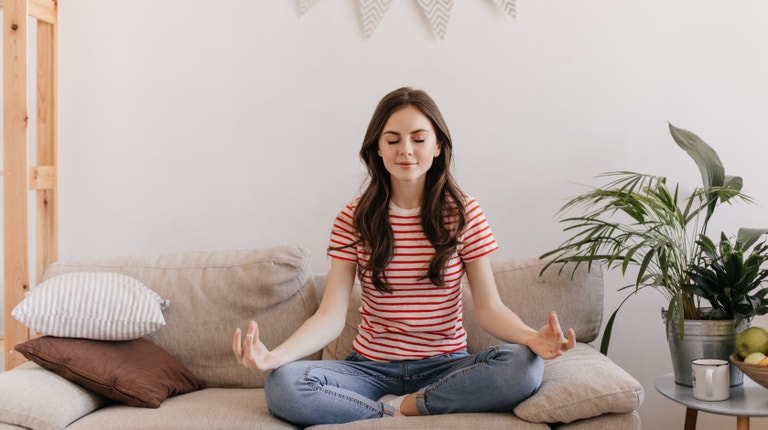
How To Get The Most Out Of Meditation
by Nicole DiekerIf your meditation practice has become just one more thing to check off the to-do list—or if you’ve been trying meditation but haven’t found it as calming as you’d hoped—it might be time to rethink the way you’re approaching mindfulness.
There are a lot of benefits to making meditation a regular habit. But if you’re not in the right frame of mind when you unroll your yoga mat, sit down on your couch or open your Calm or Headspace apps, you’re not going to reap all of the potential benefits.
In other words, you might need to learn how to relax before you meditate. And yes, I know that’s hard. (Especially right now.)
At Wired, Matt Jancer suggests creating a designated meditation space to help you get into the mindfulness mindset. This might be difficult, especially if you’ve already taped off one part of your home as a workspace and another as a classroom for your kids. (You did take our advice to use literal masking tape, right?)
But that’s not to say that you still can’t find a way to create a unique meditation environment, even in a space that has to serve multiple purposes. Jancer advises lighting a candle prior to beginning your meditation practice, for example, or drinking a cup of tea—and the trick here is that you light the same candle every time (especially if it’s a scented candle, so you can associate the smell with mindfulness and relaxation) and drink the same type of tea.
You can also change your mindset by changing your clothes, whether that means going from daywear to pajamas or simply swapping out your everyday stretchy pants for your meditation-only stretchy pants. All of these little rituals can help remind you that it’s time to unwind: the feel of the the soft fabric against your skin, the warmth and flavour of the tea, the aroma of your freshly-lit candle, the light cast by its flickering flame.
(You’re feeling more relaxed already, aren’t you?)
The thing about meditation is that you can’t go into it thinking “All right, I have to start this app right now or I won’t be able to get to bed on time and then I’ll be tired tomorrow and I have that Zoom meeting and the kids are supposed to go outside and identify five kinds of flowers for a school thing and I cannot wait for the school year to be over except then I don’t know what I’m going to do with them all day but it’s not like anyone knows what they’re doing at all these days so I’m just going to fire up this meditation and get it over with.”
(Sorry for destroying that sense of relaxation we were building together.)
Meditation, like most worthwhile practices, takes more time than it takes, if that makes sense. Mindfulness isn’t something you can toggle on and off whenever it fits into your schedule. You have to come to it ready to commit yourself to the process—and making the prep work part of the process will make your meditation habit both more relaxing and more meaningful.
Ture, a lot of guided meditation videos and apps start the process by transitioning you into a more mindful state. The people behind them know that most of us aren’t coming to meditation as relaxed as we could or should be.
But if you do take extra steps to make your meditation practice unique and distinct from everything else on your to-do list, you might be surprised at the ways in which your practice will deepen and grow—and you might find new ways of retaining that sense of calm, focus and clarity in your daily life.